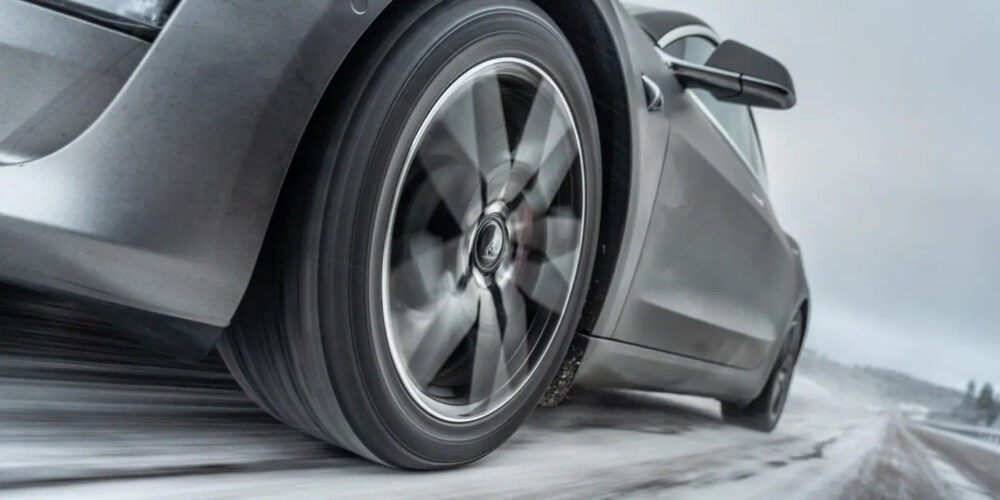CC:
If you are servicing the brakes or suspension system on a Tesla Model S, you do not need fancy orange gloves or insulated tools. The brake system on the vehicle uses the 12-volt electrical system and not the 400-volt electrical system. Still, it is always a good practice to disconnect the 12-volt power system if you must remove a caliper or replace a brake hose.
In order to disconnect the 12-volt power system on the Model S you must access the “frunk” or front trunk. And before you disconnect the 12-volt battery you need to do two things.
First, roll the driver’s side window down. Why? The upper channel for the window is in the roof rail. When the door is opened, the electric window motor lowers the glass slightly to clear the lip of the seal. If the power is disconnected first, it can’t lower the window when the door is opened or closed. This could result in shattering the glass. This goes for the other doors on the vehicle as well. In addition, this practice prevents you getting locked out of the car.
Second, use the touch screen to disconnect the power and disengage the parking brake. If you can’t find the setting in the menu, put the car into “tow mode” or “jacking mode.” This will disengage the air suspension and parking brake.
It is now safe to disconnect the battery in the frunk. The battery is located under an access panel in the front under the cowl. On models made after April 10, 2016, you will have to remove a portion of the HEPA cabin air filter to access the battery. Disconnect the negative battery cable first. On the passenger side of the frunk, you will see a panel with an icon of a set of side cutters. Under the panel is the first responder’s loop – disconnect it at the connector.
Most of underside of the Model S is a huge battery. Lifting the car with a lift adapter on the battery can damage the battery. The Model S has rails next to the skirts designed for lifting the vehicle. Be sure the lift you’re using contacts the Model S only at the points on the rails recommended by Tesla .
The Model S has an optional air suspension package. The air struts automatically self-level, even when power is off, so the system needs to be disabled before you lift the vehicle. You can put the vehicle into jacking mode as described above, using the settings menu of the touch screen.
The front brakes on a Tesla calipers can be a floating or fixed opposed piston calipers depending on the options. The Tesla Model S is vulnerable to the same wear and corrosion that occur on vehicles with internal combustion engines. But the damage can be more severe because the regenerative braking system might not allow the brakes to reach normal operating temperature.
The rear brake can use a four-piston caliper with a separate parking brake caliper or a single-piston caliper with an integrated electric motor that applies the parking brake.
For models with the separate parking brake caliper, when the car is put into tow mode, the caliper will retract enough to remove the caliper and rotor. The parking brake caliper self-centers over the brake rotor. If the slide pins or boots are damaged, the parking brake might not be able to hold the car on a grade when parked.
Once the brakes are serviced, you can reconnect the battery. From the screen, you can adjust the rear calipers using the service mode. Should you go for a test drive? Yes! Even if the majority of braking is performed with the regenerative braking system, hard stops and low-speed stops still use the hydraulic brakes. Performing a test drive can confirm the brakes work and are quiet.
This video is sponsored by BendPak.













